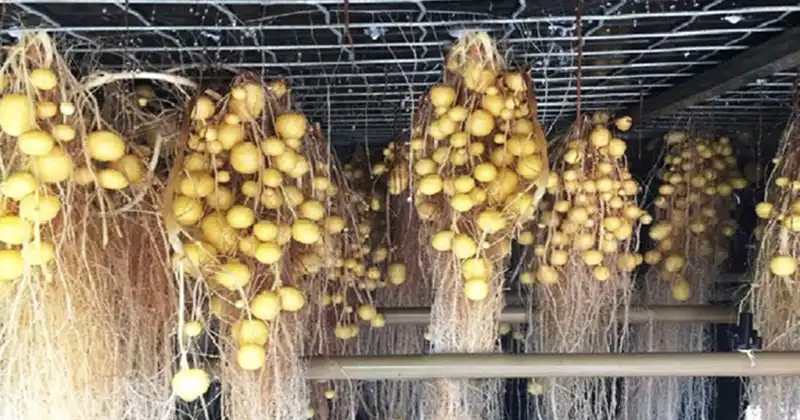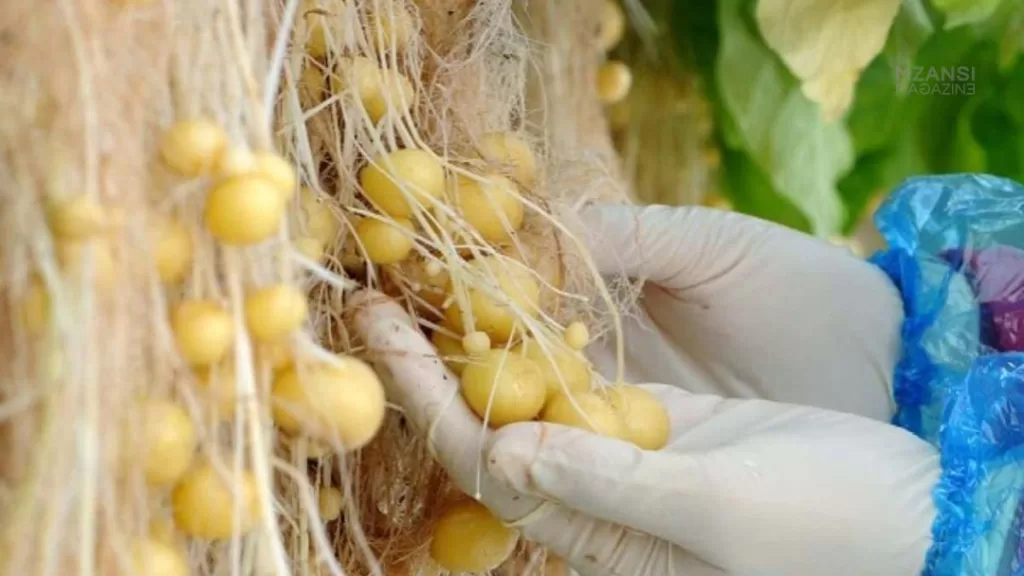Growing potatoes used to require vast fields and soil, but not anymore! Thanks to modern agricultural technology, we now have innovative methods that can defy all expectations. One such method is aeroponics, which allows you to grow crops, including potatoes, in the air. In this article, we’ll explore in detail how you can grow potatoes using the aeroponic system.
What is Aeroponics?
Aeroponics is an advanced technique where plants are suspended in the air and their exposed roots are regularly misted with a nutrient-rich solution. This method offers several advantages over traditional soil-based cultivation, such as faster growth rates, greater yield, and a cleaner growing environment.
Materials Needed
To get started, you’ll need a few things:
- Aeroponic System: This system includes a reservoir, misting system, and supports for suspending the plants. You can either buy a pre-made setup or create your own DIY version.
- Potato Seed Tubers or Cuttings: Choose healthy tubers that are free from diseases. If you prefer using cuttings, make sure they have “eyes” from which shoots can emerge.
- Nutrient Solution: Potatoes require specific nutrients to grow, so you’ll need a solution specially designed for them. However, if you can’t find one, a general-purpose vegetable solution will also suffice.
- pH Testing Kit and pH Solutions: Maintaining the right pH level is crucial for the growth of potatoes. You’ll need a testing kit to check the pH of the nutrient solution and solutions to adjust it, if required.
- Net Pots: These containers hold the potato cuttings or seed tubers in place while allowing the roots to grow freely.
Steps to Grow Potatoes Aeroponically
- Setting Up: Follow the manufacturer’s instructions or your DIY plan to assemble your aeroponic system.
- Planting the Tubers: Place each potato seed tuber or cutting into a net pot, ensuring that the eyes are facing upwards. If using cuttings, opt for a segment with 2-3 eyes.
- Nutrient Solution: Prepare the nutrient solution as per the manufacturer’s instructions. Check its pH level using the testing kit, aiming for a pH range of 5.2 to 6.0. Adjust the pH, if necessary, using the pH solutions.
- Misting: The aeroponic system will mist the roots at regular intervals, providing them with the required moisture and nutrients. The frequency of misting may vary depending on the system and environmental conditions. Ensure that the roots remain moist but not waterlogged.
- Monitor Growth: Keep an eye on the progress of your potatoes as they grow. Make sure the nutrient solution doesn’t run out and that the pH remains stable.
- Harvesting: Once the plants flower and begin to die back, it’s an indication that the potatoes are ready to be harvested. Turn off the system and carefully remove the potatoes from the net pots.
Benefits of Aeroponic Potato Growth
There are numerous advantages to growing potatoes with the aeroponic method:
- Reduced Disease Risk: Since there is no soil involved, aeroponically grown potatoes are less susceptible to pests and diseases.
- Higher Yields: Thanks to optimized delivery of nutrients and oxygen, potatoes can grow faster and produce a greater yield.
- Space Efficiency: Aeroponic systems can be stacked vertically, making them ideal for urban or space-limited environments.
- Water Efficiency: These systems consume less water compared to traditional farming methods, making them environmentally friendly.
In conclusion, aeroponic potato cultivation may sound like something out of a science fiction movie, but it’s a reality today. With the help of this innovative technology, we can optimize potato growth in a sustainable and efficient manner. As agriculture continues to evolve, embracing such methods will pave the way for a more food-secure future.







